Riverwoods Village Hall
300 Portwine Rd.
Riverwoods, IL 60015
Office Hours: M-F, 8:30am - 1:30pm
Phone: 847-945-3990
Fax: 847-945-4059
The natural plant communities within the Village of Riverwoods are unique and provide many benefits. The plant communities serve as habitats for native birds, animals, and pollinators. In 2015, the Village of Riverwoods and the Riverwoods Preservation Council (RPC) contracted with Resource Environmental Solutions (RES) to complete a Village-wide natural plant community inventory. The inventory study revealed that Riverwoods has diverse natural plant communities due to gradual changes in elevation and wetness. To learn more about your natural plant community, locate your lot on the “Riverwoods Natural Plant Communities” map. Next, find a brief summary of the natural plant community your lot belongs to below. See this detailed Woodlands Map to view the diverse plant communities of Riverwoods.
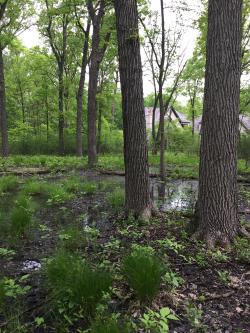
Northern flatwoods are a unique wooded wetland community and rare in the Chicago Region. Northern flatwoods develop over an impervious subsurface clay layer leading to seasonal inundation and ponding. The community receives most of its water from overland flow and precipitation in winter and spring and loses water primarily through evapotranspiration in summer and fall. These conditions result in a plant community that adapts to seasonally wet conditions and then must withstand summer and fall drought periods. Common native plant species include swamp white oak (Quercus bicolor), American elm (Ulmus americana), fowl manna grass (Glyceria striata), blue flag iris (Iris virginica), swamp oval sedge (Carex muskingumensis), common wood reed (Cinna arundinacea), and brome hummock sedge (Carex bromoides).
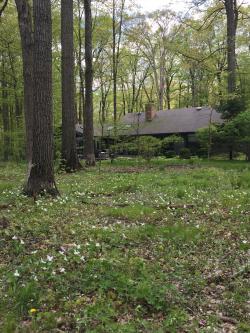
Mesic woodlands are dominated by red oak (Quercus rubra) with white oak (Quercus alba) as a subdominant in the canopy. Historically, canopy cover in mesic woodlands was 50-80%. It is now greater than 80% primarily as a result of fire suppression leading to an overabundance of fire intolerant species such as sugar maple, basswood, and green ash in a process known as “mesification”. Other common native species include sugar maple (Acer saccharum), musclewood (Carpinus caroliniana), ironwood (Ostrya virginiana), common witchhazel (Hamamelis virginiana), Pennsylvania sedge (Carex pensylvanica), woodland knotweed (Polygonum virginianum), bottlebrush grass (Elymus hystrix), common wood reed (Cinna arundinacea), wild leek (Allium tricoccum), May apple (Podophyllum peltatum), and white trillium (Trillium grandiflorum).
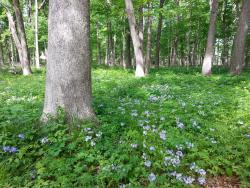
Dry-mesic woodlands are dominated by white oak (Quercus alba), usually with red oak (Quercus rubra) and sometimes bur oak (Quercus macrocarpa) as subdominants in the canopy. Historic dry-mesic woodland canopy cover was generally between 50-80% but now commonly exceeds 80% as a result of fire suppression that reduces the ability for canopy oaks to reproduce. Other common species include musclewood (Carpinus caroliniana), ironwood (Ostrya virginiana), Pennsylvania sedge (Carex pensylvanica), woodland knotweed (Polygonum virginianum), bottlebrush grass (Elymus hystrix), common wood reed (Cinna arundinacea), and wild geranium (Geranium maculatum).
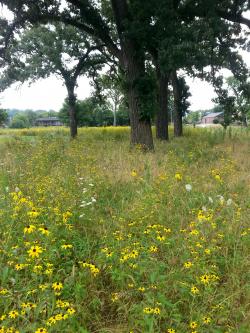
Pre-settlement savanna had between 10-50% canopy cover by a variety of oak species while prairie formed the understory vegetation. Shrub thickets were also common in the understory. The open character of savanna was maintained by frequent high intensity fires. With the loss of natural fires and settlement, most savanna communities were easily converted to other land uses by humans. High quality savanna is now one of the rarest ecological communities in the Chicago area.
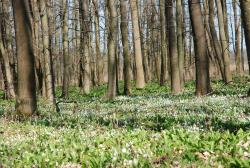
Wet and wet-mesic floodplain forests are wooded wetland communities located along floodplain terraces of streams and rivers where flooding is frequent and often prolonged in lower lying areas. Floodplain forests generally exhibit around 80% canopy cover by a variety of trees although it is thought that these areas were much more open historically as a result of fire and more predictable flooding. Common native plant species include hackberry (Celtis occidentalis), black walnut (Juglans nigra), American elm (Ulmus americana), basswood (Tilia americana), Virginia wild rye (Elymus virginicus), and woodland knotweed (Polygonum virginianum).